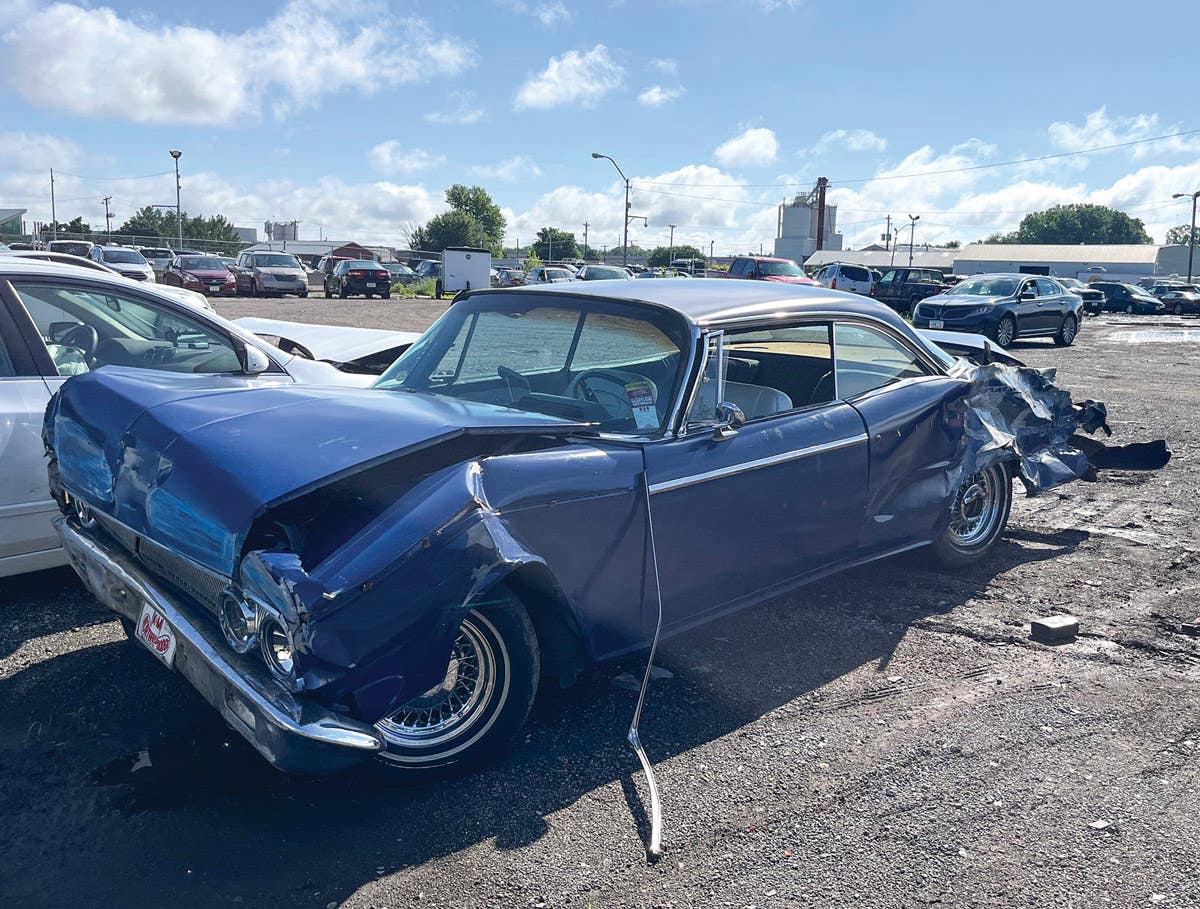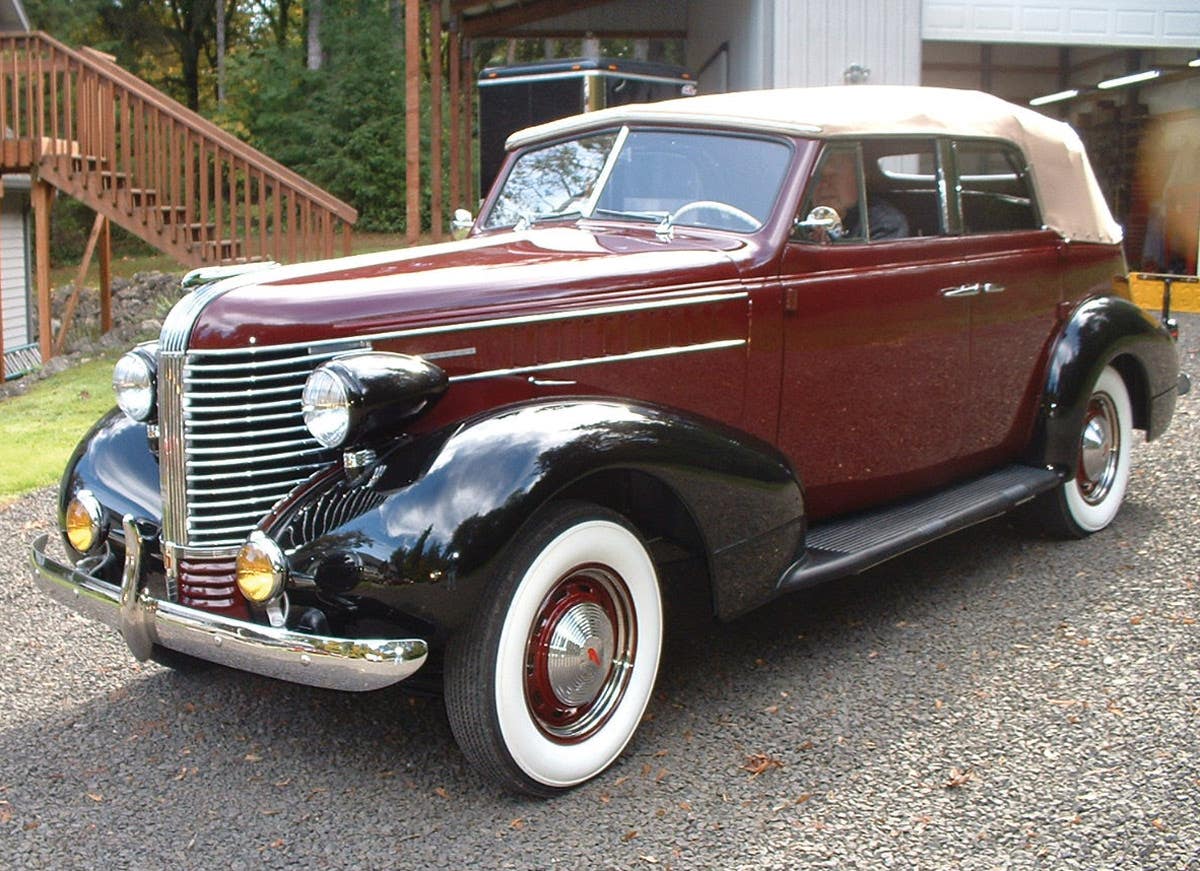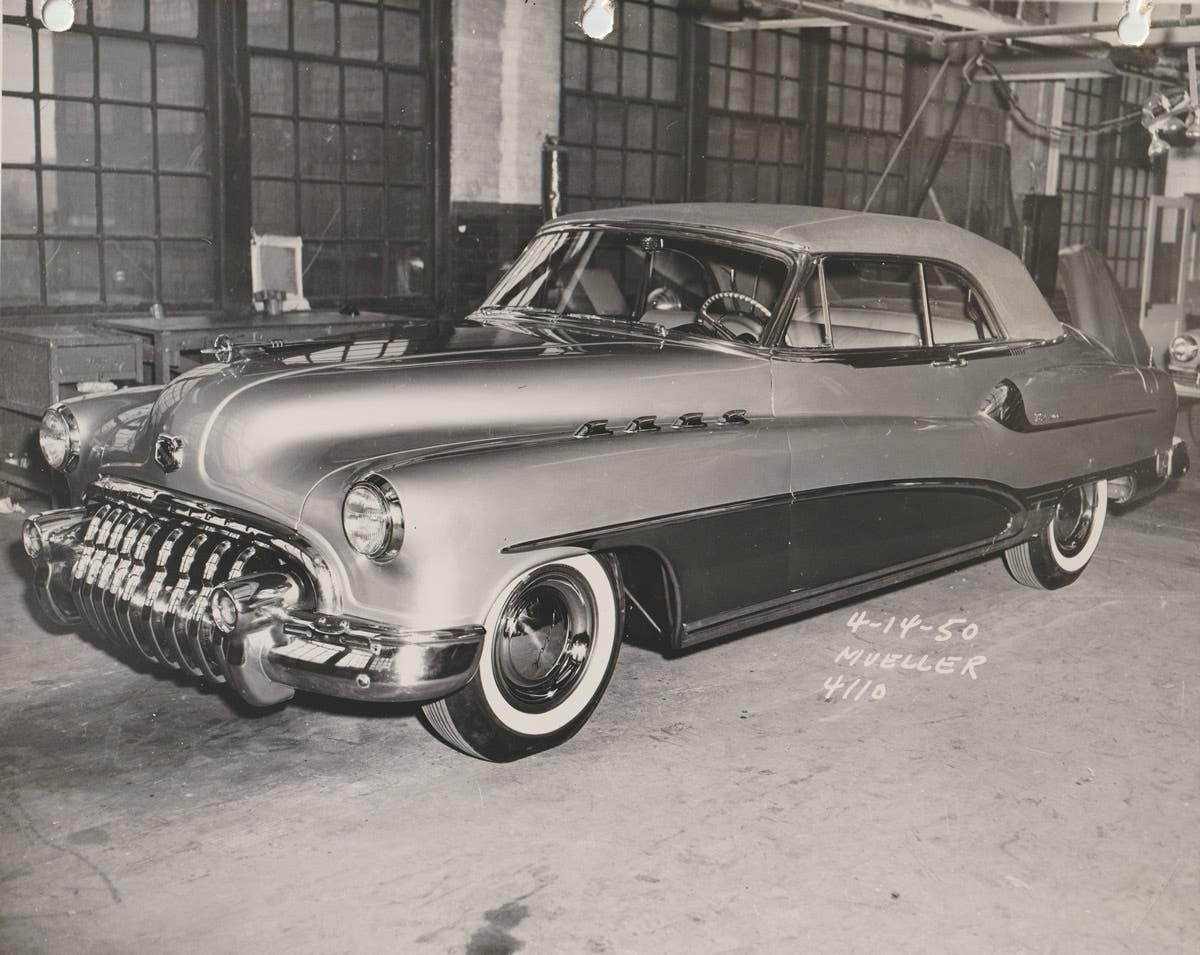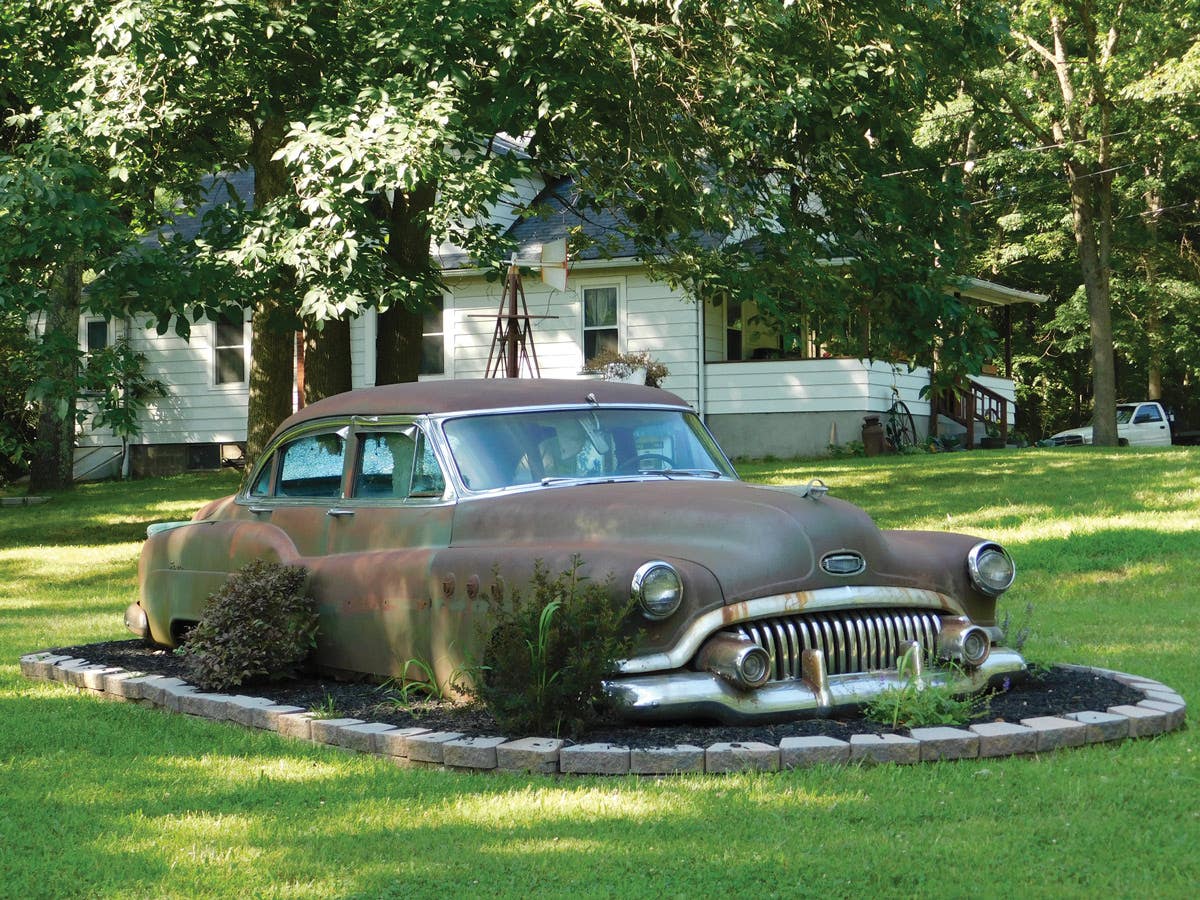Q&A with Kit Foster: September 4, 2014
Q. Regarding Douglas Taylor’s search for a windshield for his 1956 Plymouth (Feb. 27 and April 17), one of the largest classic auto glass sellers is Bob’s Classic Auto Glass…
Q. Regarding Douglas Taylor’s search for a windshield for his 1956 Plymouth (Feb. 27 and April 17), one of the largest classic auto glass sellers is Bob’s Classic Auto Glass in Eugene, Ore., 1-800-624-2130. I’m not sure about a windshield, but they have the side glass.
— Randy Mayer, Memphis, Mich.
A. Thanks for that. Possible supplier information is always welcome.
-------------------------------------------------------------
Q. I bought this emblem at a swap meet last year and wonder if anyone can identify it. It looks to be from the Art Deco era.
— John Tumolo, Mantua, N.J.
A. Both Hudson and Alvis have used the triangle in their logos, the latter always red. I don’t recognize this one, though. Readers, who knows it?
-------------------------------------------------------------
Q. I saw the discussion about power windows (Q&A July 24). Patrick Bisson mentioned seeing a Flint with “power” windows. This car is a 1925 Flint Model E-55, owned by our Club member Bill Vigus from Clio, Mich. Bill always draws a crowd when he demonstrates this unique feature. Patrick is correct that these are spring loaded. You can see this car in the pictures section on our web site at www.DMACWEB.com.
— Frank Witkowski, president, Durant Motors Automobile Club, Hookstown, Pa.
A. Thanks for the update. Maybe a YouTube video of the feature would be a nice addition to your website.
-------------------------------------------------------------
Q. To my knowledge, the first production Cadillacs with power windows were the series 75 division window limousines of 1941 (except for the livery models). Only the division window was powered and it was powered electrically. All other windows in these cars were manual. The first production, non-limousine model with power windows would have been the 1946 convertible coupe. The Hydro-Lectric system powered the front door windows, the seat, and the top in that car. Cadillac did install power door and division windows (both electric and Hydro-Lectric) on some of the in-house customs built starting in, I believe, 1940. These cars were custom-built for GM brass and, in 1941, for the Duke of Windsor.
— Jeff Hansen, Newark, Del.
A. Thank you for filling in the Cadillac power window story. The Duke of Windsor was partial to General Motors cars, having owned several Buicks beginning before his abdication as King Edward VIII.
-------------------------------------------------------------
Q. I am trying to help a friend with an intake pinhole leak of coolant on his 1969 Camaro. I read about this recently and I’m thinking it was in your column, but after going back through months of issues, I found nothing. I recall the answer was static electricity caused by the coolant flow that would eat a hole in the manifold. It was most likely caused by a poor ground. Was your column the source of this story?
— Mark Finco, Green Bay, Wis.
A. I don’t recall this topic coming up in Q&A, and my index, back to March 2008 when I took over the column, doesn’t show it. I do know that Chevy intake manifolds, particularly the aluminum ones, have had their share of problems. The Vortec composite-type manifolds have been especially troublesome, with high rates of gasket failure leading to coolant in the crankcase. In the case of aluminum manifolds and cast iron heads, the coolant can become an electrolyte between the two dissimilar metals, in effect forming a battery. I’ve just looked at my 1995 Chevy small-block Suburban, and I note that the main battery ground goes to one of the bolts for the (aluminum) intake manifold, with a smaller-gauge pigtail to the body. This may or may not relate to the situation with your friend’s car, but the Camarophiles in our readership will likely comment.
-------------------------------------------------------------
Q. The turn signal lamp shown in Q&A for June 5 and July 24 was, I believe, manufactured by Yankee Auto Lamp Co. and was used on various vehicles before turn signals became standard equipment. I remember seeing them in the 1940s. The company is still in business today as a safety equipment supplier.
— Charles B. Arnold, Newark, Del.
A. Thanks. I believe Yankee Auto Lamp has figured in Q&A columns in the past. These turn signals are authentic aftermarket accessories for cars of the period, although perhaps not as noticeable on the road as the flashing indicators we’re used to.
To submit questions to this column: E-mail angelo.vanbogart@fwmedia.com or mail to: Q&A, c/o Angelo Van Bogart, 700 E. State St., Iola, WI 54990-0001.
Got Old Cars?
If you don't subscribe to Old Cars Weekly magazine, you're missing out on the only weekly magazine in the car hobby. And we'll deliver 50 issues a year right to your mailbox every week for less than the price of a oil change! Click here to see what you're missing with Old Cars Weekly!
More Resources for Car Collectors:
- Classic car price guides, research, books, back issues of Old Cars Weekly & more
- Get expert restoration advice for your classic car
- Get car pricing, data and history all in one place
- Sign up for Old Cars Weekly's FREE email newsletter
- Need to buy or sell your classic car? Looking for parts or memorabilia? Search our huge online classified marketplace







